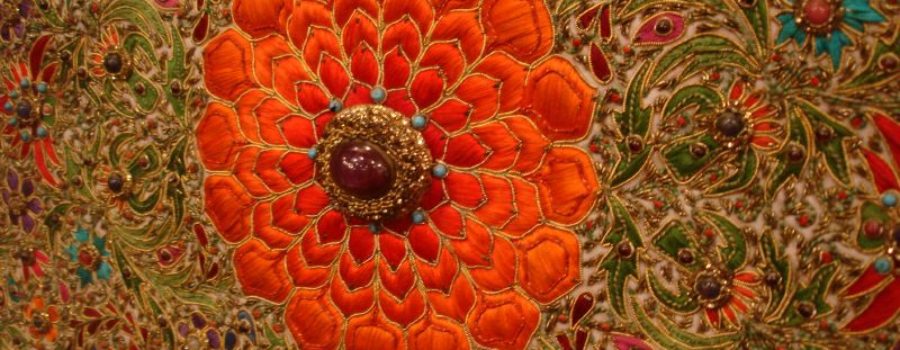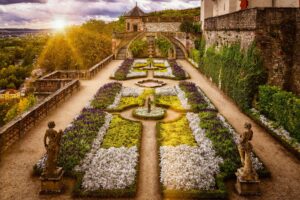“Of the wood of Lebanon Solomon the King made himself a palanquin; he made its pillars of silver, its support of gold, its seat of purple, its interior inlaid with love by the daughters of Jerusalem.” (Song of Solomon 3:9,10)
The palanquin
The palanquin referred to in these verses was a small compartment carried by people to transport the king, and eventually His bride.
We are told the king had made it himself. He did not only design it but built it with his own hands. He was both the artisan and the one for whom it was fashioned. The result was, by all standards, a piece of art finely and meticulously created.
The palanquin Solomon built, as well as his royalty, was a figure of what was to come. Actually the Song of Solomon is, in its totality, an idyllic love story representing the ravishing fellowship between Jesus and the fervent Christian. A fellowship soaked in intimacy and deep affection.
The wood of Lebanon
For the most part the palanquin was made of the wood of Lebanon, which refers to cedar, one of the most beautiful and lasting woods. The palanquin of our King is meant to be eternal. While it may seem unconceivable for us to carry our King in a palanquin, we must remember that Jesus has still the form of a man with a glorified body, and He is going to reign on the earth as sovereign King amidst the praise of His people. He will cross again the gate of Jerusalem, but this time not on a donkey’s back but possibly on a glorious palanquin, the work of a Great Master, carried with joy by the redeemed.
In Spain, more precisely in Andalusia, people carry their idols on their shoulders. It is an arduous work leaving the people ill disposed for some days; yet the people volunteer with great joy, counting it a privilege to carry their idol made of wood and plaster and covered with a dress. But what a privilege ours will be, to carry the Son of God who became the Son of man to save and redeem us; to put the work of His hands on our shoulders, and more so, to carry the One whose love still abides and whose holiness and faithfulness have ravished the heart of those who have crossed the veil.
So the glory of Lebanon was part of the masterpiece, a wood able to endure the test of time, full of fragrance and able by its very nature to resist the possible invasion of termites or carpenter ants.
Silver, gold & purple
The pillars of the palanquin were made of silver and its support of gold, both materials representing glory and duration. The pillars were situated on the four corners of the palanquin, and the golden support was unifying and upholding them. In the construction of the temple, gold was the most prestigious metal and silver the second (1 Chronicles 29:2). They brought shine and glory to the artistic work and created contrast by their reflecting property and beauty.
As for the seat upon which the king sat, we are told it was made of purple. It was the color of royalty. We read in the Gospel of Mark how the soldiers clothed Jesus with purple and put a crown of thorns on His head and began to salute Him, “Hail, King of the Jews!” But in the palanquin there will be no thorns, neither shall there be mockeries, but rather glory, worship and praises.
The inside of the palanquin
What we have seen so far was the work of the king, a glorious and artistic masterpiece. But this fine aesthetic work was going to be seen mostly by those standing outside the palanquin. The wood of Lebanon, for instance, could not be contemplated from the inside, and the king could hardly see the purple seat while seating on it. But there was something else He was going to see, something those outside the palanquin would hardly perceive; a final touch that was going to make this palanquin specially precious for Him.
Its interior was going to be beautified with the most impressive substance ever known. It was going to be decorated with something money cannot buy, with an existent superior to gold and silver. It was going to be inlaid with love by the daughters of Jerusalem. Love was the substance the king was going to see when he would sit in his palanquin, for the artifacts of love were going to surround Him. He was going to be reminded, and reminded substantially, that the daughters of Jerusalem love him.
The artifacts of Love
The daughters of Jerusalem were going to fabricate meticulously a tapestry that would cover the inside walls of the palanquin. Patience was going to give birth to a perfect and impressive work (James 1:4), for love is patient and committed.
The adornment was going to exhibit a play of different fabrics, and variations of colors were going to be used to enliven the arras, thus creating contrast and relief. There was going to be shiny textiles such as satin, others totally matte as linen and wool, and others semi-reflective as silk and velvet. These distinct materials were going to be cut in different ornamental shapes and embroidered with golden and silver thread. The seams holding them together were going to be invisible. In brief, the beauty and complexity of the creation was going to be a witness of fervent love and utter dedication.
The Palanquin of the Great King
If the palanquin of Solomon was so impressive, what about the palanquin of the King of kings? Even the rebels will be awestruck by its magnificence. As for the lovers, they will be brought to a place of exulted contemplation. And what about the King who will sit in it? Brethren! It will be overwhelming glory; a glory we see today through an imperfect mirror, but then we shall see Him face to face.
If all this seems amazing, there is something else that breaks the bonds of understanding. To us, who were dead in trespasses and sins, giving off the stench of death and the fetor of putrefaction; to us, who were by nature vile workers of repulsive works; to us was granted such a great regeneration as to make us—through a miracle escaping our comprehension—coworkers in His magnificent work. Yes brethren! The privilege has been given to us to embellish the inner walls of His palanquin with love. Let us give ourselves to the task. Let us bless our Beloved with works of consecration and devotion. Let us prepare a tapestry of grace, a brocade of love, for soon the King will sit in His palanquin and visit His people.
Attribution—photo by Sherry J. Ezhuthachan
If you think this post can help somebody you can share it with the options presented bellow.













